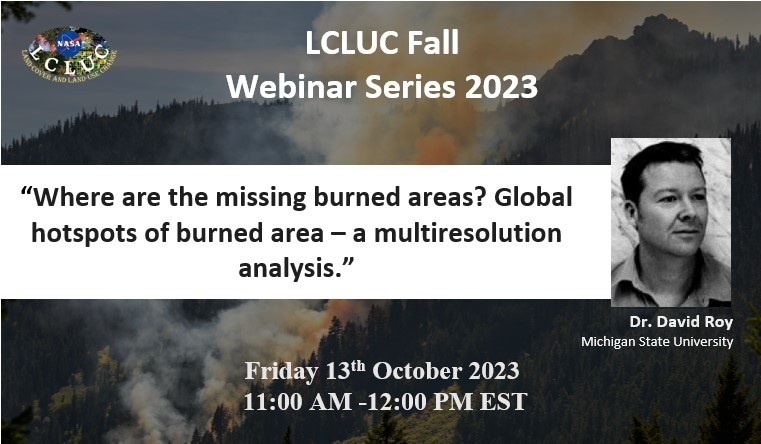NASA LCLUC Webinar: "Where are the missing burned areas? Global hotspots of burned area - a multiresolution analysis" | David Roy
Fri, October 13, 2023 10:00 AM at Virtual
Join the NASA LCLUC for their Fall Webinar Series featuring Dr. David Roy (Michigan State University) presenting "Where are the missing burned areas? Global hotspots of burned area - a multiresolution analysis."
Abstract
Global fire products derived from coarse spatial resolution satellite data provide an important source of information for the multiple user communities involved in fire science and applications. It is well established that the MODIS spatial resolution is too coarse to reliably capture much of human activity. The implications of the large discrepancy between the area burned observed at MODIS resolution and at medium Landsat/Sentinel-2 resolution are far-reaching for the science and applications communities that rely on burned area products.
The proposed research is framed around five tasks: (i) Identify global hot-spots of burned areas, specifically where the burns are missing at MODIS 500 m resolution; this will be undertaken by a global 3-year comparison of the MODIS burned area product with the MODIS and VIIRS active fire products, the hot-spot selection will be stratified by landcover, (ii) map the burned areas in the identified hot-spots at 30 m using our recently demonstrated NASA funded burned area mapping algorithm and the NASA Harmonized Landsat-8 Sentinel-2 (HLS) data, (iii) validate the 30 m burned area hot-spot results using contemporaneous 3m commercial Planet data building on our recent NASA funded Planet evaluation research, (iv)provide the hot-spot 30 m burned area maps and 3 m Planet derived validation data to the community, (v) quantify the degree that the MODIS 500 m burned area product underestimates the global area burned due to its omission of small burns.


